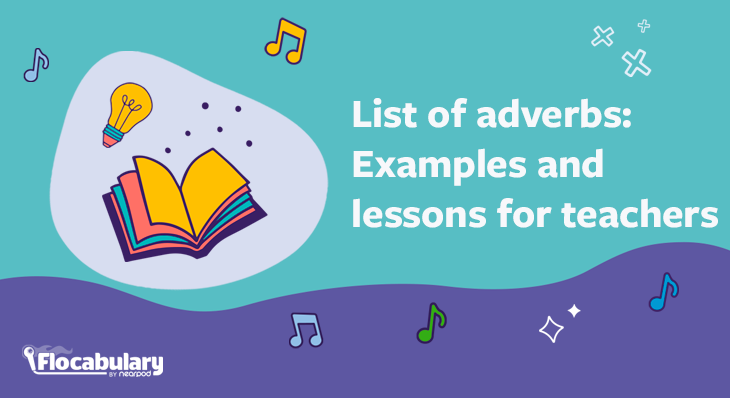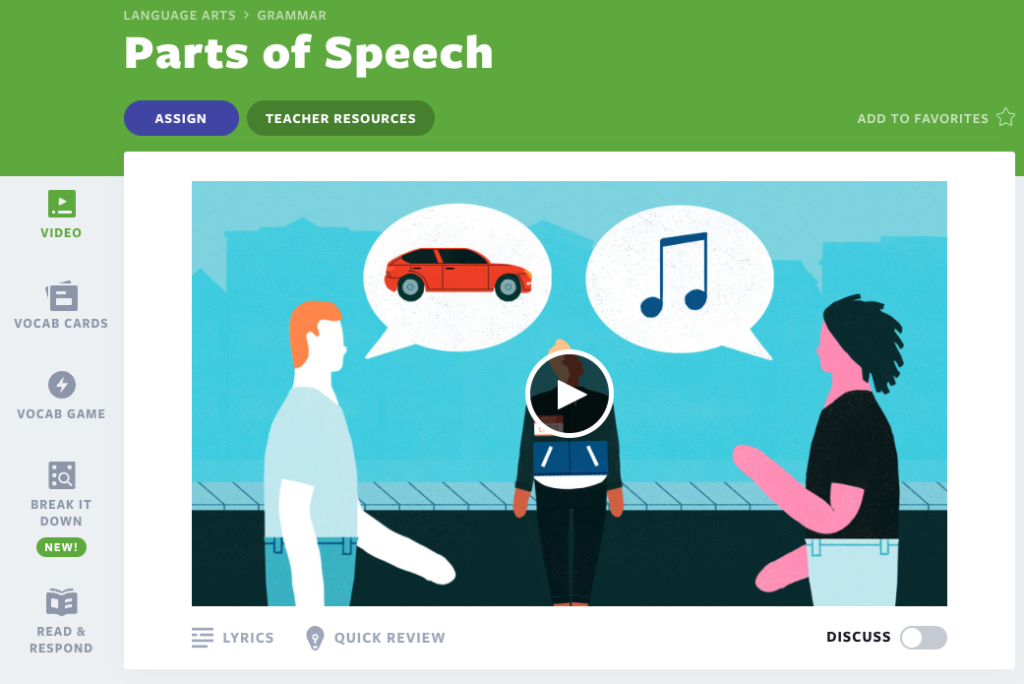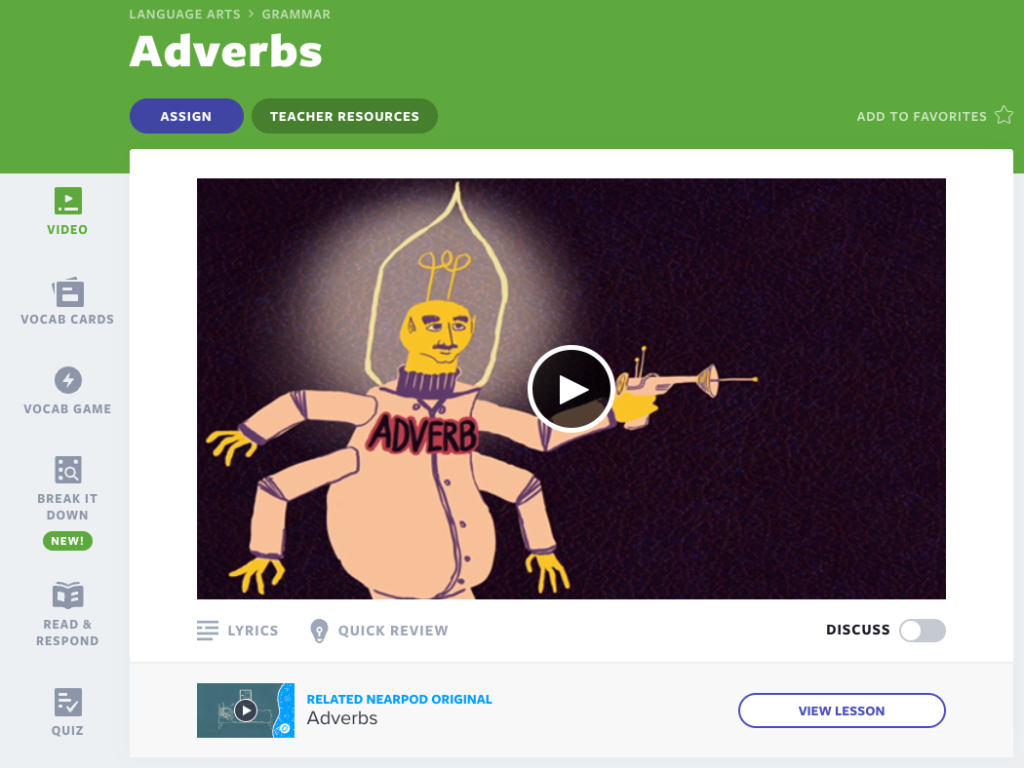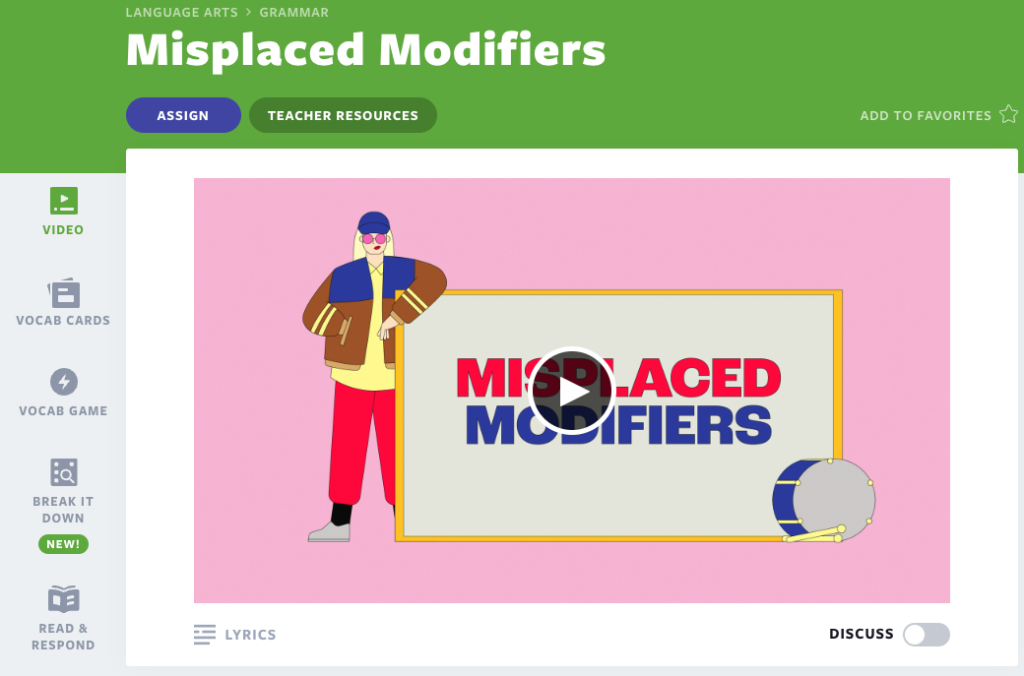
List of adverbs: Examples and lessons for teachers
Adverbs play a crucial role in enhancing our language skills, bringing depth and precision to our sentences. Whether you’re a seasoned educator or new to teaching, this resource will provide you with the tools to inspire a love for adverbs in your classroom. Keep reading to explore a list of adverbs with examples and lesson videos that will support educators and students.
New to Flocabulary? Sign up for an account to access these resources.
How do you teach adverbs lessons?
A powerful tool to use when teaching is educational videos. Use these Flocabulary video lessons in your English language arts classroom to engage students. Each lesson has an educational hip-hop song and video with activities and assessments.

- Parts of Speech: This song introduces students to the parts of speech: nouns, verbs, adjectives, adverbs, pronouns, prepositions, conjunction, and interjection. The Parts of Speech song gives examples of different types of nouns, common verbs and verb tense, and the modifying properties of adjectives. With a chorus that will get your students “running through the parts of speech,” this Parts of Speech rap is perfect for introduction or review.

- Adverbs: Adverbs modify verbs, adjectives, and also other adverbs. Follow along as this adverb rap tells the tale of Tory, a girl struggling with her homework. Tory dips into her bag of tricks and uses adverbs to help alleviate her writer’s block. So don’t get trapped: listen to this adverb song to figure out when and where to use adverbs. And don’t forget the tip of adding an “-ly” to an adjective to make it an adverb.

- Misplaced Modifiers: In this lesson, students will learn to identify and correct misplaced and dangling modifiers. When modifiers are in the wrong place in a sentence, they can create some confusing—and hilarious—situations!
What is the difference between an adjective and an adverb?
Adjectives and adverbs are both parts of speech that modify or describe other words, but they have distinct functions. Adjectives typically modify nouns or pronouns, providing information about their qualities, characteristics, or attributes. On the other hand, adverbs modify verbs, adjectives, or other adverbs, conveying information about how, when, where, or to what extent an action or quality is expressed. While adjectives add descriptive details to nouns, adverbs enhance the meaning of verbs or other modifiers by answering questions like “how,” “when,” “where,” or “to what degree.”
List of adverbs
As we mention in our adverb rap song, adverbs can modify a sentence in all sorts of ways. Keep reading to find some lists of adverbs to get you started.
Aadverbs list that show emphasis:
- Really
- Literally
- Simply
Adverbs examples that amplify:
- Completely
- Absolutely
- Heartily
Adverb words that tone a sentence down:
- Kind of
- Sort of
- Mildly
List of adverbs that show uncertainty:
- Possibly
- Allegedly
- Supposedly
Start teaching with Flocabulary
If you’d like to see more lists of adverbs, click here. And don’t miss our song, which is all about adverbs. Here’s the hook:
An adverb modifies a verb,
Adjective or even another adverb.
This is how it works, yep, haven’t you heard?
Adverbs are preferred when it comes to writing words.
Check out Flocabulary’s lesson on Adverbs. And for more from Flocabulary, listen to our fifteen other Grammar rap songs.
New to Flocabulary? Sign up for an account to access these resources.
